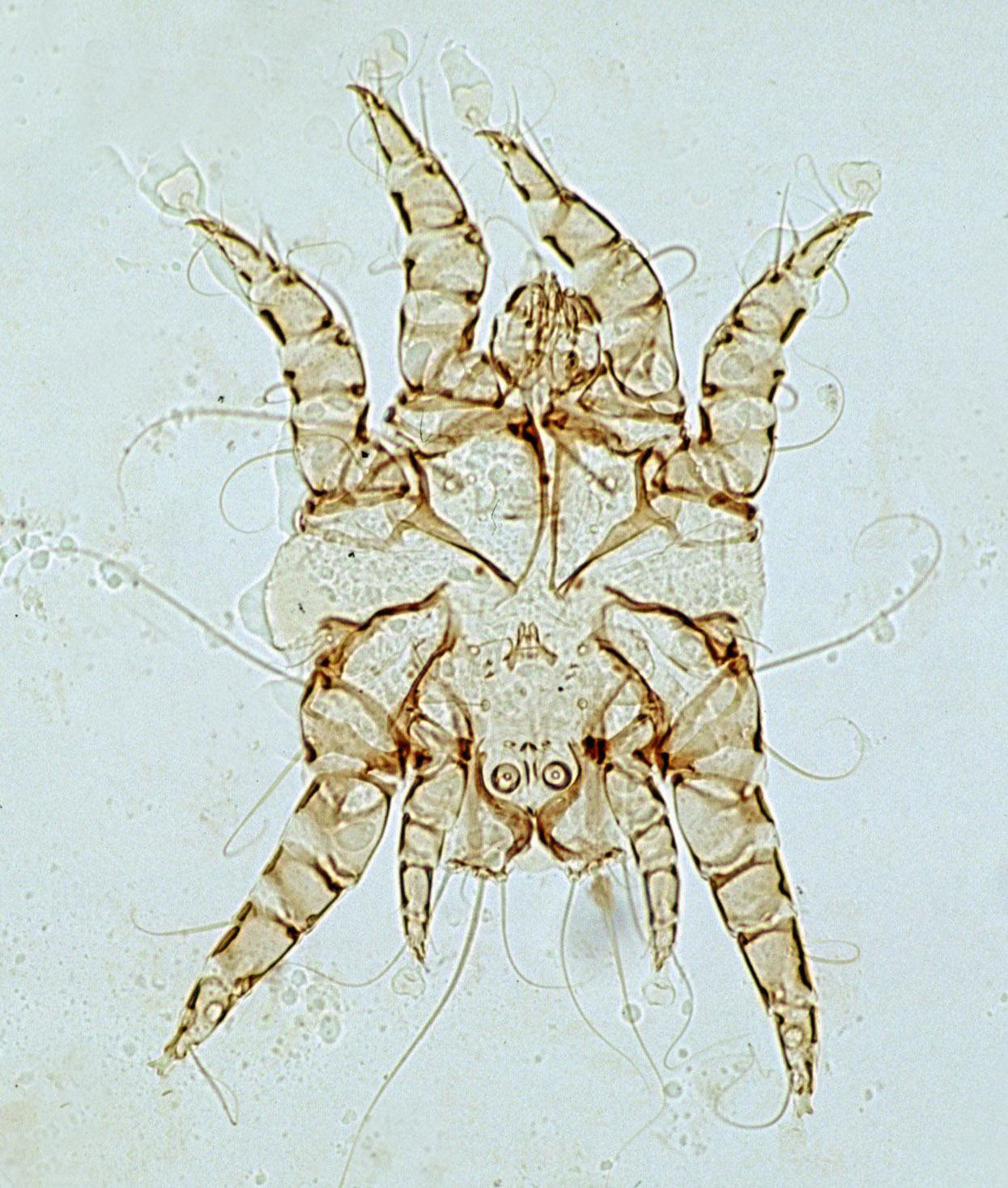Clinical Signs of Ear Mites:
-Scratching at ears or shaking head from irritation
-Thick, dark debris in ears
-Crusting in or around ears
-Wounds or thinning hair on back or base of the ear (from scratching)
Life Cycle
It takes approximately 3 weeks for a mite to develop from egg to adult. Adult ear mites live about 2 months, during which time they continually reproduce. The entire ear mite life cycle takes place on the host animal, although mites can survive for a limited time in the environment.
Who can be affected?
Ear mites most commonly affect cats, ferrets, and to a lesser extent dogs.
The two species of mites that cause ear infections are Otodectes cynotis and Notoedres cati. Otodectes infect dogs, cats, foxes and ferrets. Notoedres infect cats.
Diagnosis

Based on clinical signs, your veterinarian may want to take a sample of the discharge and examine it under a microscope to identify the presence of ear mites. Ear mites cause inflammation and irritation creating risk for secondary infection. Other consequences of ear mites if left untreated include permanent hearing loss.
Can humans get ear mites?
Yes, although very rarely. However, ear mites have evolved to prefer dogs and cats rather than people. In people’s ears, mites die without treatment after a few weeks.
How did my pet get ear mites?
Ear mites are spread by direct contact with another pet that has them or by bedding infected pets have been using. Ear mites can also live for a short period of time in the environment.

Treatment
Most products are topical and many flea preventatives are effective. The course of treatment should last at least 3 weeks to cover the entire ear mite life cycle. Ear mites can return and you may need to treat your pet more than once. Similar to fleas, ear mites lay eggs that have an extremely tough exterior which can make it difficult to kill ear mites in one treatment.
Do not use home remedies to try and eliminate the infection. These may be harmful to your cat’s ears. Please visit with your veterinarian for an appropriate treatment plan.
Article written by: Lindsey Q